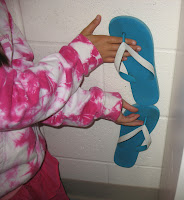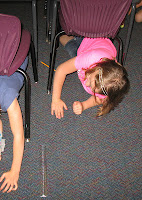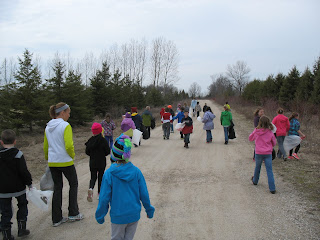“It is not that I'm so smart. But I stay with the questions much longer.”
― Albert Einstein
It seems as though in education these days we are always in a hurry, trying to fit in more and more. It may be wise to look to the past for inspiration. This quote by Albert Einstein is certainly worth reflection. In the CORE and the new NGSS - Next Generation Science Standards the idea is to get children to slow down, think and question. The other day I asked my kids to come up with some questions about some tree branches that I'd gathered. They came up with some research questions, but struggled to come up with things they could discover without books.
My challenge as a teacher is to help children to question and wonder. We want our kids to actively explore, think and reason. If we constantly plan out every detail for the kids and give them the "correct" answer after an experiment, how will they every learn to solve problems, invent and innovate?
So I tried again by putting out tree branches, cones, flowers and buds in the room. I set up some microscopes and magnifiers. Still the kids weren't taking the bait, yes a few looked and said wow, but no good questions or discoveries.
I decided we needed a trek outdoors to gather their own research material. Of course it didn't hurt that it was a lovely day! Now they were enthusiastic, maybe not for the reasons I wanted, but at least there was some excitement. They brought their leaf back to the room, opened their science notebooks and started to draw and write their observations.
After this we gathered in the living room to chart what we noticed. The kiddos had some intriguing discoveries. I charted their ideas in a somewhat organized way. If someone said their leaf was fuzzy, I asked if that was true for all of them. Our list grew into things that were different and some that were all the same. One property in common was "veins" or "tunnels" in all the leaves. I threw out a question, "What is the job of a leave? Why do trees have leaves?" We webbed out some of their ideas on the chart. How do you think we could prove our ideas?
Now the group was humming. They came up with lots of ideas and we decided to try putting food coloring into some water. The kids volunteered their leaves as test subjects. Another idea was to look at the make-up of the leaf under the microscope to see the veins better. They wanted to know if the vein was hollow or solid. I wonder where their thinking will go if they discover one or the other?
One particularly observant child, who spends lots of time in the woods, shares a bit of knowledge. He broke open a leaf once and "water" came out of the vein. Hmmmm this really has the group buzzing now. Science in the next few years is going to change. Thinking, questioning and designing will be a part of our everyday learning. Kids will need a nudge and a bit of a bump to get their thinking going, but I can't wait to see the results.
















































